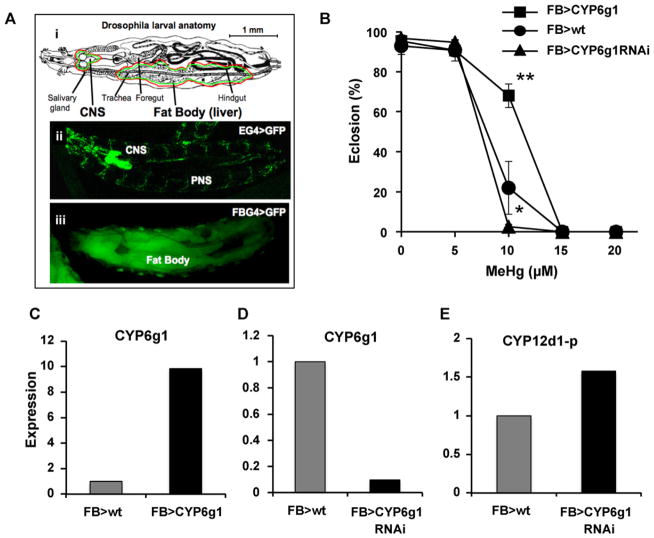Fig. 2.
Transgenic modulation of CYP6g1 expression in the fat body influences MeHg tolerance. (A) (i) Larval anatomy highlighting the central nervous system (CNS) and fat body tissues that are targeted for Gal4 > UAS expression below. (ii and iii) Tissue specific transgene expression is demonstrated for the neuron specific driver (EG4, ii) and for the fat body specific driver (FBG4, iii) in combination with a UAS-GFP reporter construct. (B) MeHg tolerance is determined by eclosion assays of flies of the indicated Gal4 > UAS genotypes (n = 150 flies/data point, expressed as mean and s.d. *: p = <0.05; **: p = <0.005 by pairwise Student’s t-test with the FB > wt control at each concentration). (C and D) Expression level of CYP6g1 determined by qRT-PCR of RNA from whole larvae extracts. Levels for over-expression (FB > CYP6g1) or knockdown (FB > CYP6g1 RNAi) are expressed relative to the FB > wt driver line alone. (E) Expression levels of CYP12d1-p in response to CYP6g1 RNA are expressed relative to the driver line alone (FB > wt). Determinations are done on RNA extracted from pooled samples of 20 larvae.

